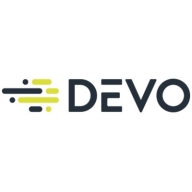

Devo and Elastic Security are two leading products in the security information and event management (SIEM) space. Users are happier with Devo's deployment ease and customer service, but Elastic Security offers superior features and flexibility, making it worth its higher price.
Features: Devo offers intuitive real-time analytics, automated threat detection, and focused analytics. Elastic Security provides comprehensive search capabilities, powerful integrations, and superior flexibility.
Room for Improvement: Devo users seek better customization options, enhanced reporting features, and deeper insights. Elastic Security needs streamlined interfaces, more detailed documentation, and improved user guidance.
Ease of Deployment and Customer Service: Devo is noted for its straightforward deployment process and responsive support. Elastic Security's deployment is more complex due to extensive setup requirements, although its customer service is effective.
Pricing and ROI: Devo's setup costs are lower, offering a more affordable initial investment. Elastic Security, while initially more expensive, provides high ROI due to its extensive capabilities and long-term benefits.
| Product | Market Share (%) |
|---|---|
| Elastic Security | 2.9% |
| Devo | 0.7% |
| Other | 96.4% |


| Company Size | Count |
|---|---|
| Small Business | 7 |
| Midsize Enterprise | 4 |
| Large Enterprise | 11 |
| Company Size | Count |
|---|---|
| Small Business | 40 |
| Midsize Enterprise | 11 |
| Large Enterprise | 14 |
Devo is the only cloud-native logging and security analytics platform that releases the full potential of all your data to empower bold, confident action when it matters most. Only the Devo platform delivers the powerful combination of real-time visibility, high-performance analytics, scalability, multitenancy, and low TCO crucial for monitoring and securing business operations as enterprises accelerate their shift to the cloud.
Elastic Security combines the features of a security information and event management (SIEM) system with endpoint protection, allowing organizations to detect, investigate, and respond to threats in real time. This unified approach helps reduce complexity and improve the efficiency of security operations.
Additional offerings and benefits:
Finally, Elastic Security benefits from a global community of users who contribute to its threat intelligence, helping to enhance its detection capabilities. This collaborative approach ensures that the solution remains on the cutting edge of cybersecurity, with up-to-date information on the latest threats and vulnerabilities.
We monitor all Log Management reviews to prevent fraudulent reviews and keep review quality high. We do not post reviews by company employees or direct competitors. We validate each review for authenticity via cross-reference with LinkedIn, and personal follow-up with the reviewer when necessary.